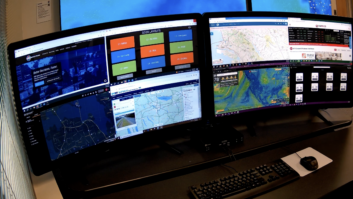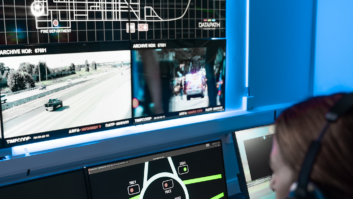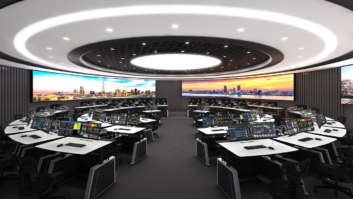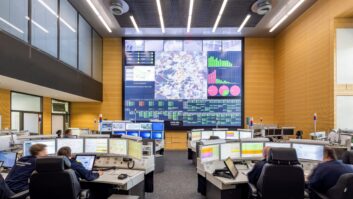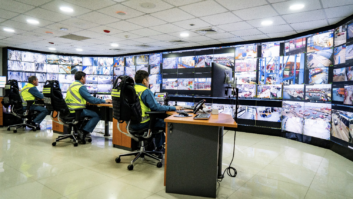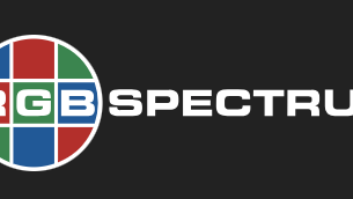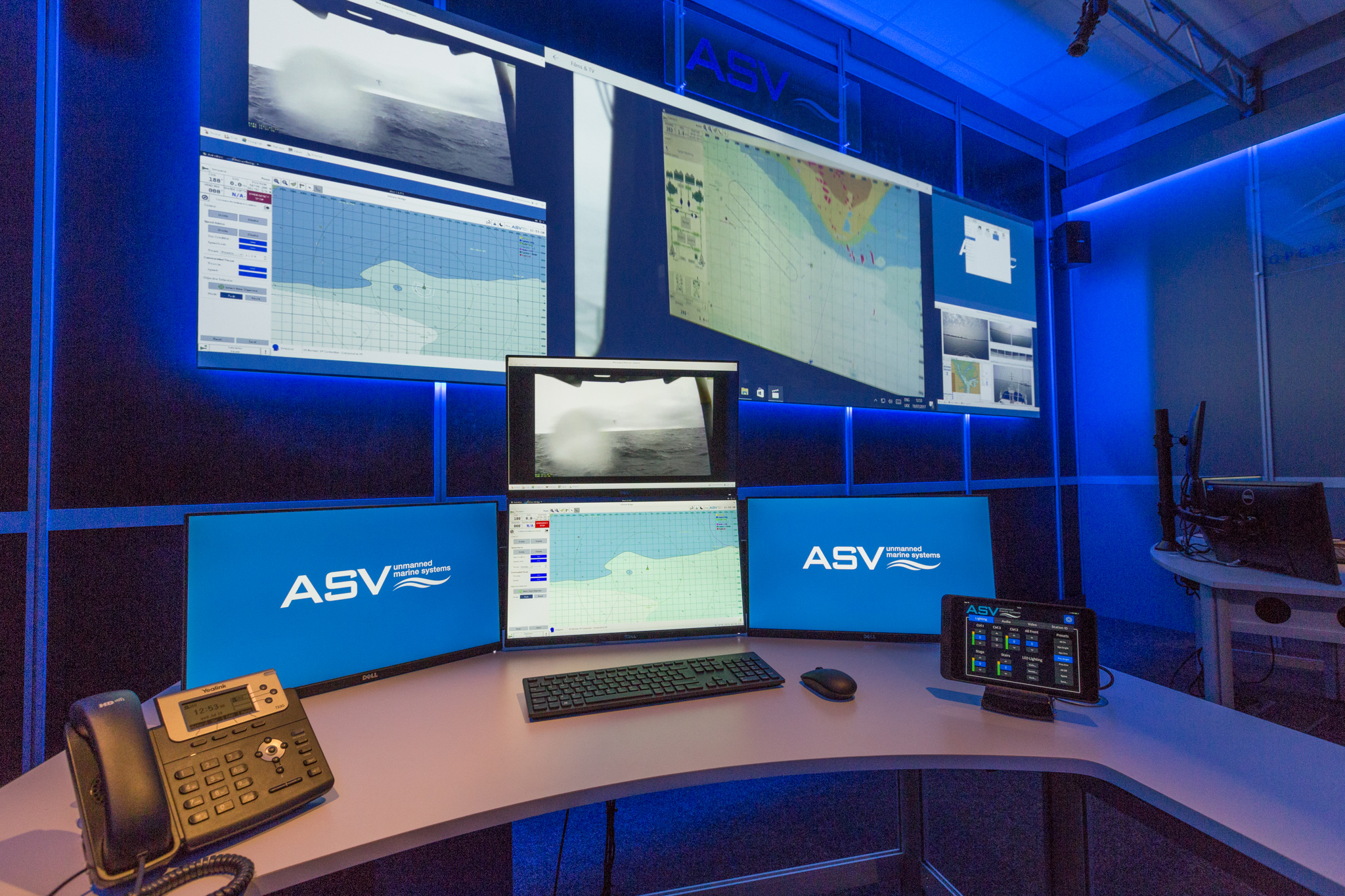
ASV Global, a leading developer of autonomous vessel technology, has built a Mission Control Room facility with White Light handling the technical set-up within the space.
With work stretching across both sides of the Atlantic, the ASV team creates systems that are used in the scientific, commercial and military sectors. The Mission Control Room facility enables the team to control and monitor the numerous autonomous boats aka drones it builds as they operate all over the world.
White Light’s Huw Godfrey oversaw the installation. “ASV had a very specific brief for us: they wanted a Mission Control Room that could not only be used to control the drones they create but also display data from these back into the room in order to monitor their performance,” commented Godfrey.
White Light worked closely with Hills Design, Godfrey stated: “Greg Hills, the main designer, showed us his plans and how he envisaged the layout of the space. The main focal point was a wide format screen on which content could be relayed. For instance, if there were numerous drones currently active, the idea was that all of this information could be transmitted onto the screen. There would also be various control stations located within the space feeding back to a control rack, on which would sit both the presentation PC and main control system for the room.”
White Light drew on a range of the latest AV and projection equipment to ensure that the Mission Control Room received the exact technical solutions required. To deploy the content, the company drew on the Christie Phoenix system, which is an open content management system specifically designed for control room environments. Godfrey explained: “With the Phoenix, you have a system that can share accurate information quickly. It allows multiple users to share, view and interact with data all the while being controlled from a single control room location. We knew it was ideal for the ASV content sharing requirement.”
The content itself was projected onto a 4.7m screen using two Christie QC Projectors blended together. For master control within the space, White Light drew on a Crestron control system. This means that those operating within the space can select which footage they wish to relay either to their local or the main screens. In the control rack area, there is a touchscreen presentation PC, which is used to control the Christie Phoenix system. The PC also has external inputs should further information need to be relayed to the system.
Godfrey continued: “It was important that we supplied a system that was easy-to-use as well as allow the space to become multi-purpose. Alongside its everyday usage, ASV want to use the facility for client demonstrations along with internal presentations so it was important that the space had flexibility. Similarly, on the rack area, we installed a HDMI input which means users can plug in an additional machine. We also ensured that each of the stations within the control room had external USB points along with iPads, on which users can control the Crestron interface.”
Throughout the space, White Light also installed Yamaha MRX7 Speakers for sound reinforcement along with LED tape to provide atmospheric lighting. The company drew on Clear-Com headset microphones, which allow those in the space to control who they speak to, both internally and externally, using the iPads at each station. An LED Halo was positioned around the main screen and LED Mini Profiles were used to light the control desks and presentation space. WL also created five lighting pre-sets, which can be altered depending on the room’s usage.
The consultancy phase of the project lasted five months, whereas the on-site installation took two weeks.
Picture: Will Hesse
